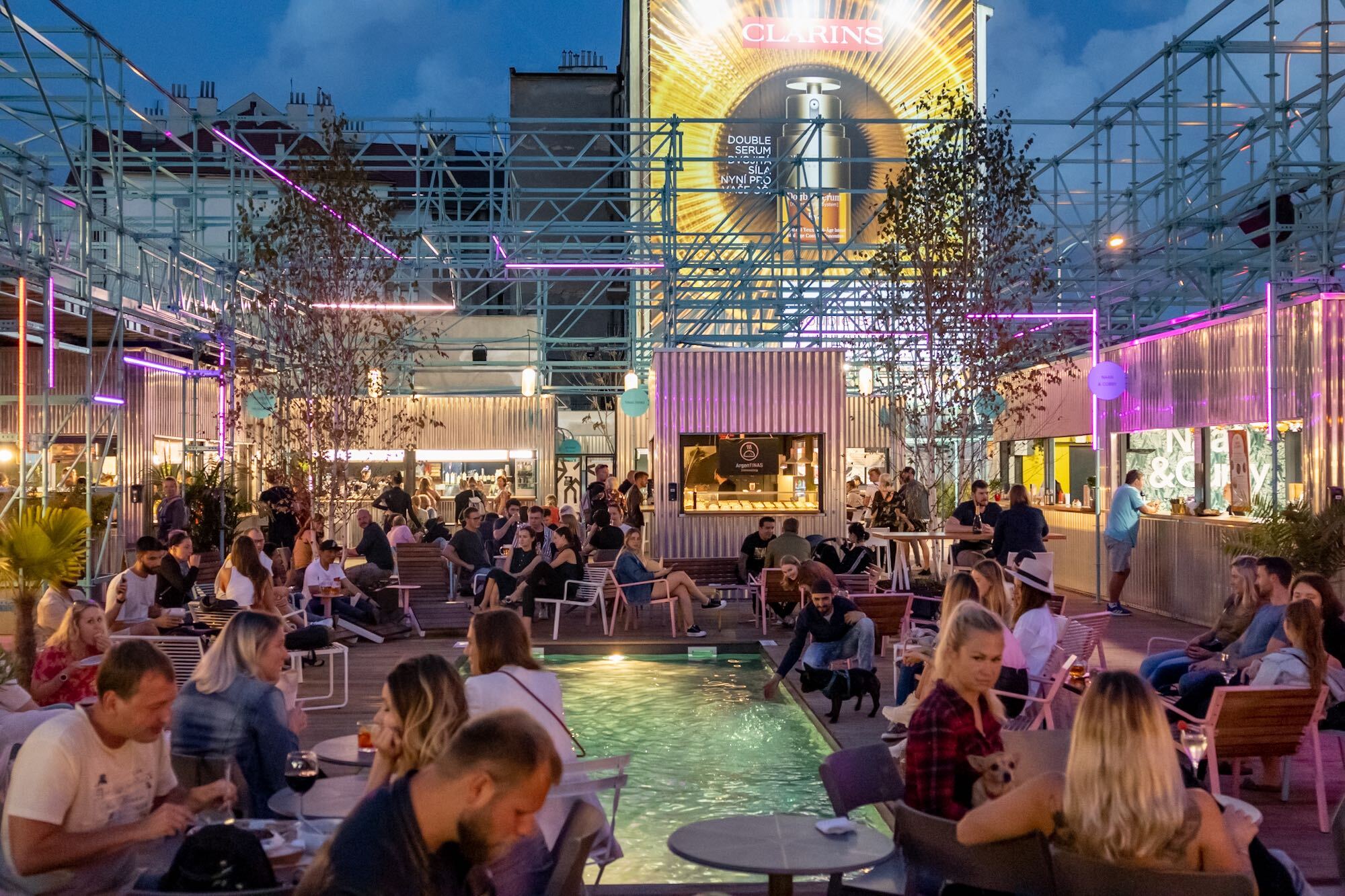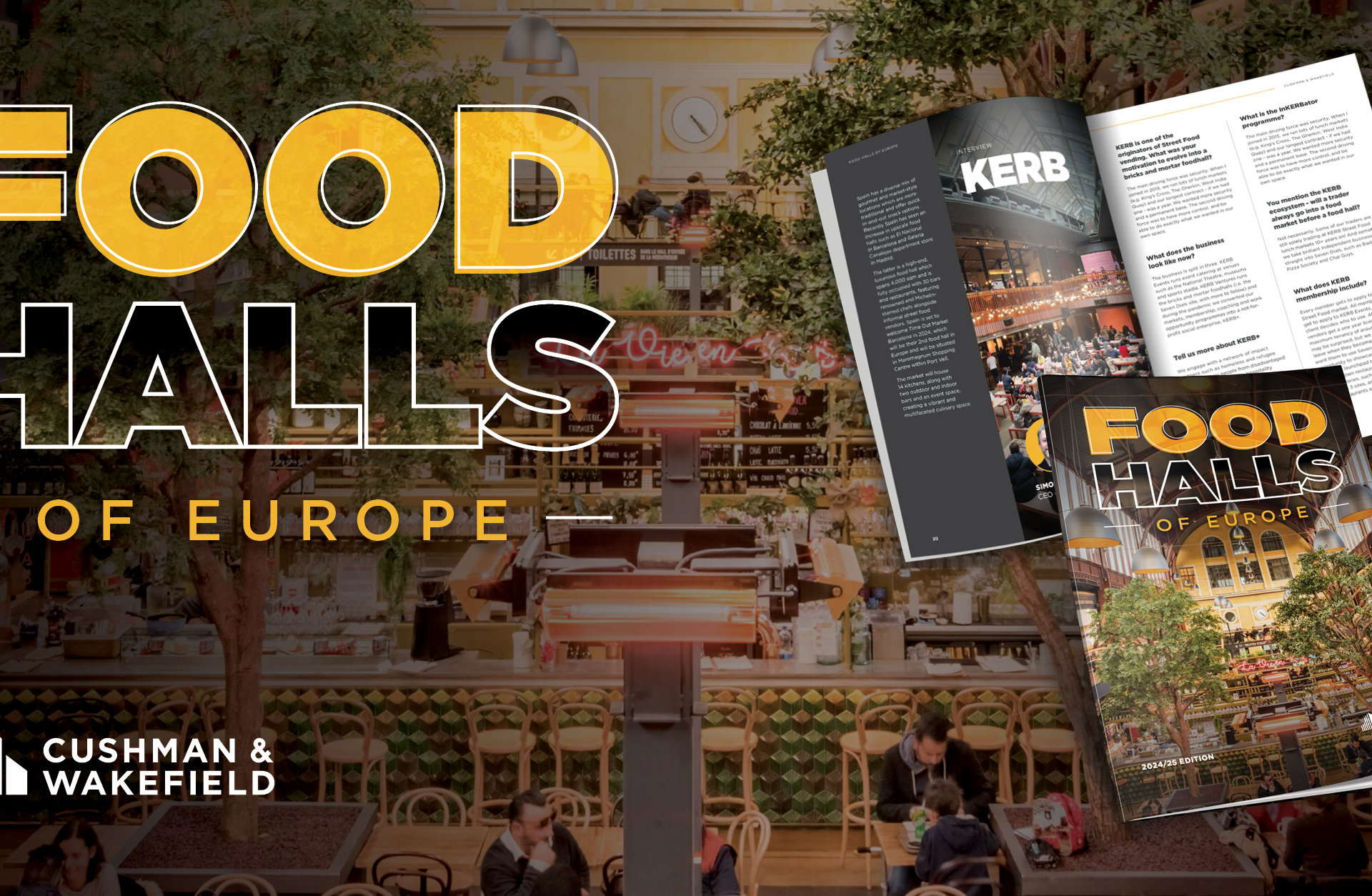The number of food halls1 in Europe has risen by almost 50% in the last seven years, with 135 now open and ten more to follow soon. This information is taken from the latest Cushman & Wakefield Food Halls of Europe report. The Czech Republic is represented in this sector by the Manifesto format, a concept which is catching on in other European cities.

There are now more food halls in Europe than there were in 2017, when property consultancy Cushman & Wakefield first started tracking this sector. Back then, there were 90 projects open or under construction. Over the past three years, the consultancy has also advised on more than 1,100 food and beverage (F&B) deals in Europe.
Food halls have quickly become popular with younger people who prioritise unique experiences. They offer a great variety of freshly prepared authentic food and drink in a communal setting that often adheres to sustainability principles. Even though food halls were shuttered during the pandemic and unforeseen cost increases forced some to close, the overall trend has been positive, driven by adaptability and growth. The concept has really taken off in the UK and France, with 42 and 20 food halls, respectively, already up and running or on the way. It is also making inroads in new markets, including Belgium (4), the Czech Republic, and Ireland. The food hall is now a go-to spot for customers looking for a place to go without a reservation if they want a guarantee of quality and variety.

_________
Table: 10 European food halls
| European markets | Food halls open/opening soon | Food halls in 2017 |
| United Kingdom | 42 | 19 |
| France | 20 | 8 |
| Italy | 16 | 18 |
| Germany | 8 | 3 |
| Denmark | 8 | 3 |
| Spain | 7 | 8 |
| Netherlands | 7 | 2 |
| Poland | 7 | 4 |
| Portugal | 5 | 4 |
| Sweden | 5 | 4 |
Source: Cushman & Wakefield
Typical operating concept
It is rare for individual F&B operators to negotiate with the property owner. What usually happens is that a hall operator leases all the space from the landlord, usually for 10 to 15 years. The hall operator is then responsible for renting out space to smaller operators of various food and beverage concepts, including bars, social areas, and leisure facilities. The operator also arranges management services such as security and cleaning, and oversees the marketing and branding of the food hall’s overall identity. The success of the whole concept depends mainly on curating the right choice and mix of operators of various concepts, and on making sure that they are original and of a high quality. The concepts of the people running the individual establishments may evolve frequently so that the project as a whole continues to offer the best of what is currently available on the local market. This means customers can try something new each time they visit. Halls can vary considerably in size depending on where they are, ranging from 300 sq m to 10,000 sq m.
Some of today’s best-known concepts in Europe include Time Out Market, BOXPARK, Eataly, KERB, and Manifesto.

An original concept from the Czech Republic
Czech customers are most familiar with the Manifesto concept, which first opened its doors in Florenc, Prague, in 2018. It brought together amazing architecture with top-notch food in one place, and, in doing so, breathed new life into a previously neglected site near Masaryk Station, changing it almost beyond recognition. Since then, it has opened Manifesto Smíchov and, most recently, Manifesto Anděl (2021) in Prague. This last venue is still going strong today. New Yorker Martin Barry has taken the successful Czech business model to Berlin’s Potsdamer Platz and is also set to open a new Manifesto at St Andrew’s Church in Dublin.
Jan Kotrbáček, Head of Retail Agency CEE, Cushman & Wakefield: “The Czech market is evolving fast and customers are increasingly looking for places where they can enjoy great food as they hang out with friends and family. Food halls are a great way to combine quality food with cultural and social experiences. They’re often set up in unusual places, which makes them a great new destination.”

Outlook for the Czech Republic
Manifesto Market is the only food hall concept in the Czech Republic that’s been around for a while. In the years following Manifesto’s success, a few smaller open-air concepts have popped up, such as Backyard Anchor and Savarin Gardens. In a way, Savarin Gardens gave us a taste of Time Out Market, the big Portuguese food hall concept you might know from many other places in Europe and the US. It is now going to open in the new Savarin Shopping Centre. The same developer is working on the Dornych project in Brno, which is also going to have a large food hall.
Jan Kotrbáček, Head of Retail Agency CEE, Cushman & Wakefield: “Transforming unused spaces that originally served different purposes into new food halls can breathe new energy and life into neglected streets and city areas. It’s important to make these projects stand out with their own unique design and atmosphere so they’ll attract both locals and tourists.”
There are also plans for a Smíchov Market Hall, which will be part of Sekyra Group’s new Smíchov City development. The Old Town Market Hall in 28. října Street, which is owned by the City of Prague, is also awaiting new use. Its future is to be the subject of a competitive dialogue.
Communities and sustainability
The report points out several key themes that Cushman & Wakefield believes will affect the growth of food halls in the next few years:
Multipurpose model: While food remains a big part of the picture, the push to create day-round experiences means that multipurpose social spaces where a range of events, from cooking classes to competitions, can be held are becoming the norm, as are larger corporate projects and partnerships.
New formats: These are likely to include venues in transport hubs that give passengers more choice and a better experience, as well as smaller formats in neighbourhood settings. The key will be to identify sites that have the footfall needed to support all-day catering seven days a week.
Revitalisation: Community-focused projects and the repurposing of scruffy buildings or neglected sites can be a great way for owners and stakeholders to give a place a new lease of life, while also creating a valuable community hub.
Jan Kotrbáček, Head of Retail Agency CEE, Cushman & Wakefield: “It’s also vital to think about sustainability and the environment when planning new food halls. One way to do this is to revitalise interesting buildings and sites that are no longer used for their original purpose. It should be standard practice to use recycled materials, support local businesses and farmers, and minimise food waste. A well-designed food hall can really benefit the community and the local economy. It can even become a destination that customers will travel long distances to reach. Experiential dining, which combines original concepts with interesting spaces, is becoming a global trend, and the Czech Republic is no exception. While there aren’t enough of these concepts yet, there are sure to be more on the way, and we have a lot to look forward to.”
[1] Note:
The Cushman & Wakefield report defines food halls as places where people can find a wide range of freshly made, authentic food and drink that is offered and served in a shared space, reflecting the underlying trend of the concept. This term does not include outdoor venues or traditional refreshment outlets in shopping centres.
For comparison purposes, the 2017 data excludes certain food halls in Russia that were covered in the original report at the time.



